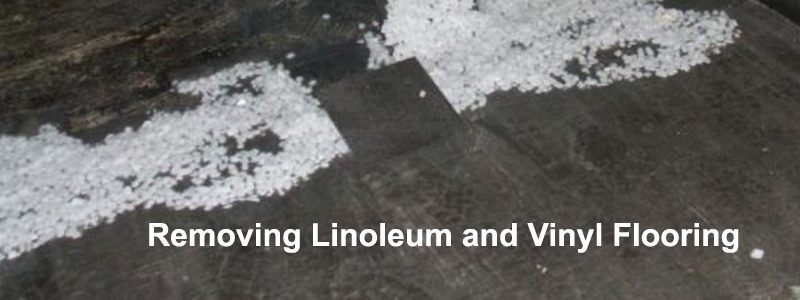| If you’ve just moved into a new house, or you’re looking to change things a bit, you may be faced with removing linoleum or vinyl flooring. Removing vinyl or linoleum flooring can be more challenging than you want, but it may be worth the effort. |
Understand why you need to remove the flooring
There are several tricks of removing linoleum and vinyl floors, but first you should need to know why you are looking at removing your flooring:
- It’s out of date
- You’re just kind of bored with it
- The surface is “banged” up
And why haven’t you done it yet?
- You’ve heard that it’s hard
- You’re not sure what you want to do
Glued floors make the removal tough
If you’ve ever tried removing linoleum and vinyl floors, it seems that every layer just yields more and more frustration. Not only is the original flooring seem almost impossible to remove (especially with age), but also doing so can harm the layer underneath, making new flooring lay unevenly. You might also find globs of concrete-like glue underneath, which may not be readily removable without the help of specialized cleaners for removing linoleum and vinyl floors.
The Removal Process
If you’re dead set on removing the old flooring, then it will take a bit of time. You can start with chipping away at the old flooring and using heat to soften the material or use one of the old tricks of removing linoleum and vinyl floors by cutting it out.
Start the process by pulling the linoleum or vinyl flooring by hand and once you get a chunk of the material out, use a razor knife to cut the vinyl into smaller strips, as it can make the work easier, instead of cutting an entire big strip. You can utilize the help of another person to use a floor scraper to clean the surface underneath the vinyl flooring while you are cutting down the strips, as it can help speed up the process.
Remove the Adhesive
And once you have removed all the strips of linoleum or vinyl flooring, the only thing left is the adhesive, which needs to be removed or else the floor looks ugly.
A special chipper one of the tricks of removing linoleum and vinyl floorsthat can help you in the beginning, and a heavy duty adhesive remover will help when you get to the clumps of glue from the initial installation.
A lot of homeowners have been rewarded in their floor removing efforts with a nice wood (or other material) floor underneath. This can be stained and sealed and make for a beautiful home accent.
Get Creative
If this sounds like too much work, there are other tricks of removing linoleum and vinyl floors or if the surface can’t be saved, you may want to get creative and decorate it instead. Place plywood on top of the damage flooring (adhering it) and install your new flooring to the plywood. Many homeowners are turning to covering the old flooring with new flooring rather than go through the effort and mess of removing the old flooring first. If the surface is still usable, a coat or two of paint, using paint that adheres to vinyl and linoleum, can cover up the old design or color. Follow that with some urethane and you’ve got a new, beautiful floor.
Start a Fun Family Project
Another fun idea is to literally decorate what’s already there instead of using cleaners for removing linoleum and vinyl floors. Start with a clear coat of urethane, add some decorative items (glitter, coins, stamps, etc.), let it dry and then add more urethane. This is a great idea to enliven a new kids play room or bedroom, or to add drama to the kitchen. Involve the kids in picking out the “fun stuff” and you’ve got a fun family project. Of course, the fumes can be a bit much, so they should probably just be in on the planning part.
Summary
If you’re starting with a clean and dry surface, you can start over in terms of your flooring options. Using cleaners for removing linoleum and vinyl flooring isn’t the only option when you’ve got a damaged or outdated floor. There are many hole fillers that can be used to create a smooth surface for painting, while the addition of some plywood can make what was old new again.
Don’t feel that you’re ever stuck with the linoleum or the vinyl flooring that you have — get creative!
